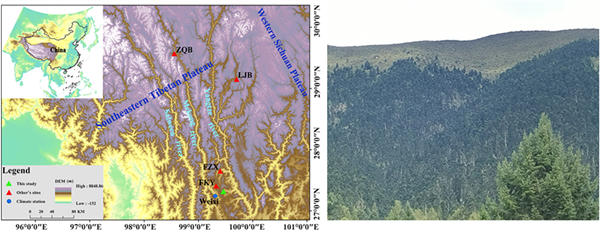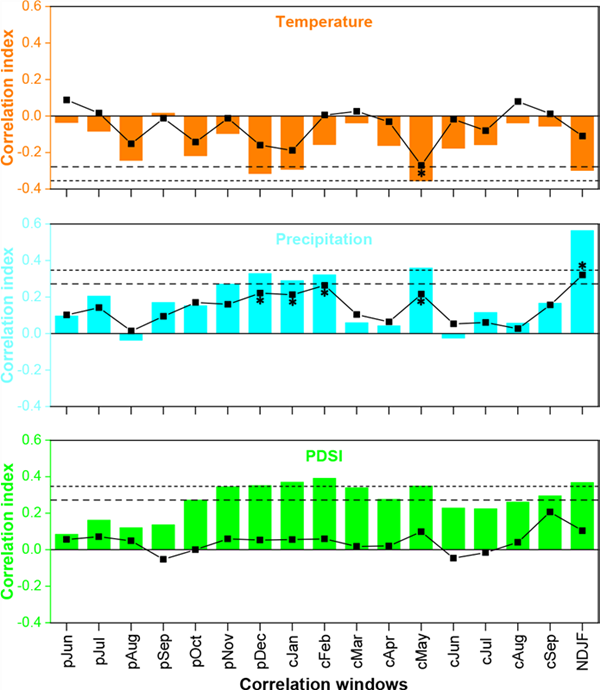Researchers Reconstructed Historical Non-growing-season Precipitation in Southeastern Tibetan Plateau
2021-11-25
A joint research team led by researchers from the Xinjiang Institute of Ecology and Geography of the Chinese Academy of Sciences, and the Research Center for Eco-Environmental Sciences of the Chinese Academy of Sciences, reconstructed the historical non-growing-season precipitation history using tree rings in the southeastern Tibetan Plateau.
The findings were published in Climate of the Past, entitled "A 406-year non-growing-season precipitation reconstruction in the southeastern Tibetan Plateau.
The Tibetan Plateau is known as the "third pole" of the Earth. Because of its geographical extent and position within the global circulation system, the Tibetan Plateau plays a key role in regional and global atmospheric circulation patterns influencing the climate of southwest China as well as whole Asia.
Abundant data of historical temperature reconstructions is available in the Tibetan Plateau. However, there is almost no report about the historical precipitation reconstruction in this region, restricting our evaluation on the current trend of precipitation variation from long term perspective and its impact on the regional ecosystem.
In this study, the researchers collected tree-ring samples from Tsuga forrestii trees at high altitudes of Lijiang region in the southeastern Tibetan Plateau and established residual tree-ring chronology, then according to the results of tree growth and climate relationship analysis reconstructed the non-growing-season precipitation history.
The results showed that: (1) non-growing-season precipitation was the most important constraining factor on the radial growth of Tsuga forrestii on the high-altitude regions of Lijiang in the southeastern Tibetan Plateau (Fig. 2), the relationship between non-growing-season precipitations and radial tree growth was relatively stable over time; (2) according to the climate-tree growth relationship analysis we have reconstructed 406 years of non-growing-season precipitation history, the reconstruction explained 28.5% of the variability in actual non-growing-season precipitation; (3) reconstructed precipitation series showed similarities with existing reconstructions of hydroclimatic factors; (4) the reconstruction has a large area of spatial representativeness in the southeastern Tibetan Plateau; (5) in recent years, the non-growing-season precipitation showed increasing trend implying that it would benefit the development of regional forest ecosystem.
Article link: https://doi.org/10.5194/cp-17-2381-2021

Fig. 1 Distribution of the tree ring sampling sites in this study and comparative studies

Fig. 2 Results of climate – tree growth relationship analysis

Fig. 3 The non-growing-season precipitation reconstruction series in the southeastern Tibetan Plateau (A.D. 1600-2005)



